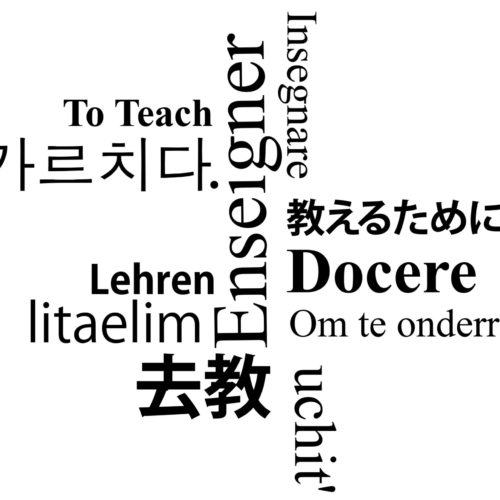Innovative Teaching During COVID-19 Series: Heidi Kolk
The Center for Teaching and Learning is highlighting innovative work done by faculty at Washington University in St. Louis during the Spring 2020 semester at the height of the coronavirus pandemic as part of a new web series. Our latest Q&A features Heidi Kolk, Assistant Professor in the Sam Fox School of Design + Visual Arts and Assistant Vice Provost of Academic Assessment at Washington University in St. Louis.
 How did you change your teaching to respond to the pandemic?
How did you change your teaching to respond to the pandemic?
In both of my undergraduate courses, I moved all my material from Box (an elaborate series of folders arranged by week) to Canvas. I did some serious compression–eliminating around 30 percent of the required reading and made the rest optional–encouraging them to engage these readings in their final project research and extra credit posts–to accommodate inevitable challenges and complications posed by online interactions.
I restructured the usual weekly sequence of course activities such that we could adopt a predictable rhythm of work or interactions that made their path a little more predictable. So each week went like this: By the start of the first class session (which convened during our set class time––it was optional but ‘strongly encouraged,’ I recorded the session in case anyone had to miss it) they’d do about half the reading for the week, and make one post on the Canvas discussion board before we joined for a Zoom meeting. During these sessions we did a little big-group discussion but mostly small-group conversations using the break-out rooms after which groups would report back, sharing answers to questions and posing new ones, often using the white board.
By the start of the second weekly session, which was slated as ‘group office hours’ (also optional but ‘strongly encouraged’), they were to have read the remaining material if at all possible, and responded to one of their peers’ discussion posts.
Our conversations in the office hours often revolved around areas of the reading that were challenging or their plans for the upcoming short response assignment (weekly two-page informal essays in which they engaged a prompt that usually asked them to synthesize material from the week and apply the insights to an example of their choosing) that would be due on Fridays. I would send them feedback by the following Monday, in time to inform their work during the following week.
In rejiggering the syllabus, I chose a major theory or set of concepts for each week that linked thematically to the broader thread of the course. I often introduced these via ‘mini-lectures’ (just 10-15 minutes in length) posted to Canvas along with the readings. They were often asked to make use of that theory/set of concepts/themes in responding to the material in class discussion. I keyed the core concepts more tightly to readings and attended more closely to the arguments in the readings than I normally would in classroom-based learning, as I wanted to see how well they absorbed certain features of the material assigned. In other words, the discussion was less open-ended, more of a series of guided, iterative meditations.
I stripped the final week way down to make room for group and one-on-one Zoom consultations about final projects, which they were asked to ‘present’ by way of Canvas posts of their project plan with a sketch of their tentative argument. This replaced what would have been in-class workshopping of project outlines. I eliminated a group presentation assignment (worth 20 percent) which was to have been delivered in class in Week 13, as they could not do the work with archival sources that it was to have involved. This required an adjustment of the Final Project (increased value, adjusted prompt).
What was the result of the changes, if any?
I had 90 percent participation for each discussion session and about 50-60 percent attendance to office hours each week! Many who did not come to the set office hours requested times outside that frame for one-on-one consultation. I had just about total completion rate for discussion posts––the exception being two students facing serious personal challenges related to the pandemic––and the quality was surprisingly good, although the posts were not as long as I might have liked. The conversations were generally also productive, if at times stilted. The most successful (lively, substantive, engaging) Canvas discussions involved posts where students were asked to ‘hunt for an especially compelling example’ of something we were discussing (e.g. individual artifacts of visual culture, social media posts, or examples of recent journalism on issues related to urban culture), and make a post where they offered a brief gloss––situating the artifact, offering their own analysis, and posing a question––to which their peers could respond. I think this challenged them to find connections between local cases and the historical ones we were considering.
How did students respond to your teaching?
The seemed to respond well to regularity of the rhythm (which was not a radical departure from our established patterns––but far more streamlined or choreographed than it would have been). They also told me they appreciated the efforts I made to reach out to them individually at the very start and then about halfway through the remote learning month––to see how they were doing mentally, what was challenging academically, what issues or concerns they were having with the material and my chosen instructional methods, etc. This allowed me also to ask the students who seemed to have retreated a bit (were not terribly communicative in discussion) what I could do to support their learning.
I also gave the students in one of the two classes a ‘midterm’ (halfway through remote learning) report on how they were doing with posts, etc., so that they could make adjustments if need be. Mostly I used them to affirm their good efforts, encourage them to expand upon or sharpen their comments. Everyone seemed to be putting for a solid effort and their quality of work very much reflected their level of engagement before spring break (so, the few who were less engaged had been before, and those who struggled with directions before continued to struggle with them after!).
What are you the most proud of?
I am most proud of the quality of the work that the students produced. Their short responses and final research projects reflected both serious effort and meaningful synthesis of the material, as well as some genuinely original thinking and innovative approaches to the research. And their online posts were generally quite good as well, even though we had not done them before (in some ways, they seemed to be more thoughtful even than in-class responses would have been). I saw new sides of my reserved students, and found ways to engage both what was happening in their home cities or towns as well as in popular culture, in the prompts for these posts.
I am also quite pleased to have maintained a sense of rapport and connection with the students, who were generally all responsive to my inquiries, willing to be honest about their needs, engaged (mostly), etc. Several of these outreach efforts are things I will continue going forward, as they allowed for more candid acknowledgement of issues like mental health issues, work habit challenges, or struggles with complex readings or concepts.
I struggled most with the live performance aspect of Zoom sessions and how to draw out those who seemed to ‘disappear’ (maybe not turning on their camera or speaking much), although these students often performed well in other contexts, like discussion posts.
What advice would you have for colleagues who need to adjust their teaching due to the pandemic/other unforeseen circumstances?
I’m not sure I have better insights than anyone else, but here are a few thoughts:
Parcel out content even more than you might normally do to encourage slower digestion, and sequenced learning. In my own courses, I strove to build week-long cycles (shrinking down what previously would have been multi-week units), with smaller and larger iterative tasks, some of which were “public” (online posts, discussion group work) and some “private” (short responses).
Establish predictable rhythms to help them feel more certain about how each week will go, how to budget their time, how to make use of a given set of materials, etc.
Hold small-group office hours that allow students to hear from one another in an informal context where the discussion topics aren’t controlled by you. They can share issues or questions that have arisen for them, and you can answer, but with others chiming in. This worked especially well in the course where I had a TA: we both went into break-out rooms where we answered questions with two to three at a time. Students reported that this was reassuring to them, as it allowed them to hear what their peers were wondering about, and also to confer with me. I think next time I might structure these interactions just a bit more––like ‘study groups’ that tackle specific kinds of questions––but then also hold individual consultation office hours at the very end for those who want to talk one-on-one.
Consider assigning short responses (I did both informal posts and the-somewhat-more-refined mini-essays) which allow students to parlay that new understanding and get feedback that they could apply the following week. I sometimes asked them to pick up on an idea from that earlier response or post in subsequent weeks, which helped to create a sense of continuity.




